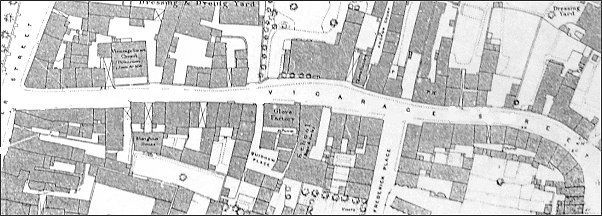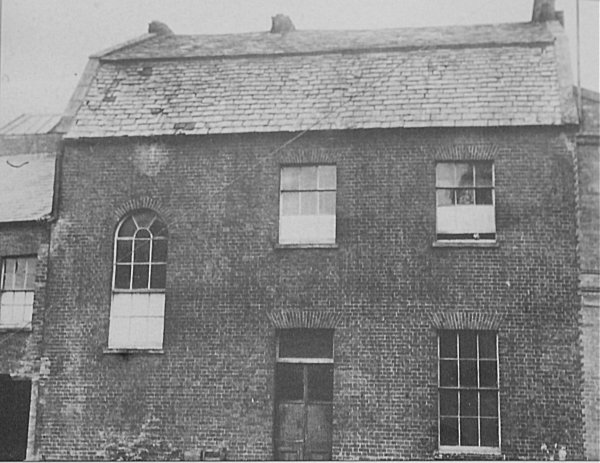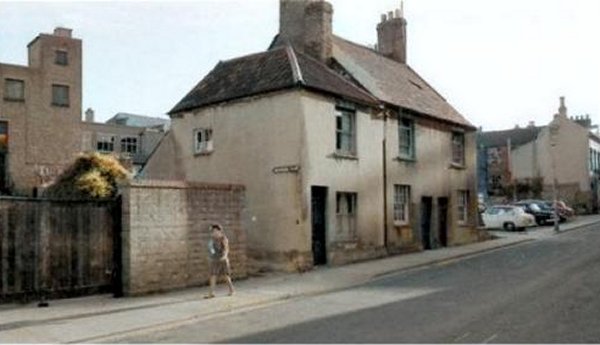Yeovil people
cuthbert raymond
Glove Manufacturer
Cuthbert Raymond was born on 3 August 1817 at Milton, Podimore, some five miles north of Yeovil. He was the son of gardener Edward Raymond (1780-1856) and Martha née Feaver (1780-1858). He was the younger brother of glove manufacturer Edward Raymond and the older brother of glove manufacturer William Raymond.
On 10 July 1845, at the age of 27, Cuthbert married Ann Axtens of Rimpton at the Independent church, Yeovil. They were to have two children; Mary Ann (1850-1854) and Walter (1852-1931). Walter Raymond was to become the famous Yeovil poet.
In 1851, Cuthbert was noted as an investor in the South Western Railway Company.
In the 1851 census, Cuthbert and Ann were listed living in Back Kingston (today's Higher Kingston) with their 10-month-old daughter Mary Ann and a domestic servant described as 'maid of all work'. Cuthbert listed his occupation as 'Glove Manufacturer, firm of Vining & Raymond employing 156 men (and) women, 8 boys'. The following year they moved to a house (photographed below) in Vicarage Street where Walter was born. The business partnership between J Morley-Vining and Cuthbert Raymond was dissolved in January 1858 and a notice was placed in the London Gazette to that effect.
In 1854 Cuthbert's wife Ann, and daughter Mary Ann, both died of typhoid and his son Walter was sent to live with his grandparents in Marston Magna. Walter also got typhoid but made a recovery. In the autumn of 1856 Cuthbert married Matilda Miles, 14 years his junior, at Yeovil. They were to have seven children; Matilda Ellen, known as Ellen, (1858-1928), Emma Miles (1860-1936), Percy Miles (1862-1941), Frances Florence (1864-1943), Alice Maud (1866-1952), Edward (1868-1943) and Cuthbert (1870-1870).
It appears that Cuthbert was in partnership with solicitor James Tally Vining and trading as glove manufacturers although almost certainly Vining was a sleeping partner. Nevertheless the partnership was dissolved in February 1858.
By 1861 Cuthbert and Matilda were living in Sherborne Road with their first two daughters, Ellen and Emma, together with a housemaid and a nursemaid. Cuthbert listed his occupation as 'Leather Glover Master employing 30 men and 5 boys'.
In the Post Office Directory of 1866 Cuthbert was listed as a glove manufacturer of Vicarage Street and the 1871 census confirmed that Cuthbert and his family were now living there together with his widowed mother-in-law, Matilda Miles, and three servants. Both he and his 19-year-old son Walter (by his first marriage) were listed simply as glove manufacturers. Both the Post Office Directory of 1875 and Whitby's Yeovil Almanack Advertiser of 1882 listed Cuthbert Raymond & Son as glove manufacturers of Vicarage Street.
From the position of Cuthbert's listing in the 1881 census, it is clear that his glove factory was that shown on the map below immediately next to Quidham Place. He was listed as a retired glove manufacturer and was living there with Matilda, four of their daughters, son Edward and two domestic servants.
During the following decade Cuthbert moved his family to Hampshire. Matilda died in the winter of 1888, aged 56, at South Stoneham and in the 1891 census Cuthbert was recorded as a 73-year-old widower living on his own means at a house called "Ivelton" in Millbrook, near Southampton, Hampshire. Living with him were his son Walter, listed as a glove manufacturer, daughters Matilda and Alice, together with a cook and a housemaid. Cuthbert died at home in 1901, aged 84.
map

A map based on the 1886 Ordnance Survey of Vicarage Street with Silver Street at extreme left. Cuthbert's glove factory is at centre, below the 'V I' of Vicarage Street and on the corner with Quidham Place.
gallery

The Vicarage Street house of Cuthbert Raymond in which he lived, certainly with his first wife and family, and in which Walter Raymond was born. This house was next door to the Anchor Inn at the western end of Vicarage Street and was demolished in the late 1950s.

This photograph dates to about 1960 and shows the narrow entrance to Quidham Place at centre. Vicarage Street runs diagonally across the photograph. Cuthbert's factory would have stood where the gates and wall are, at left.